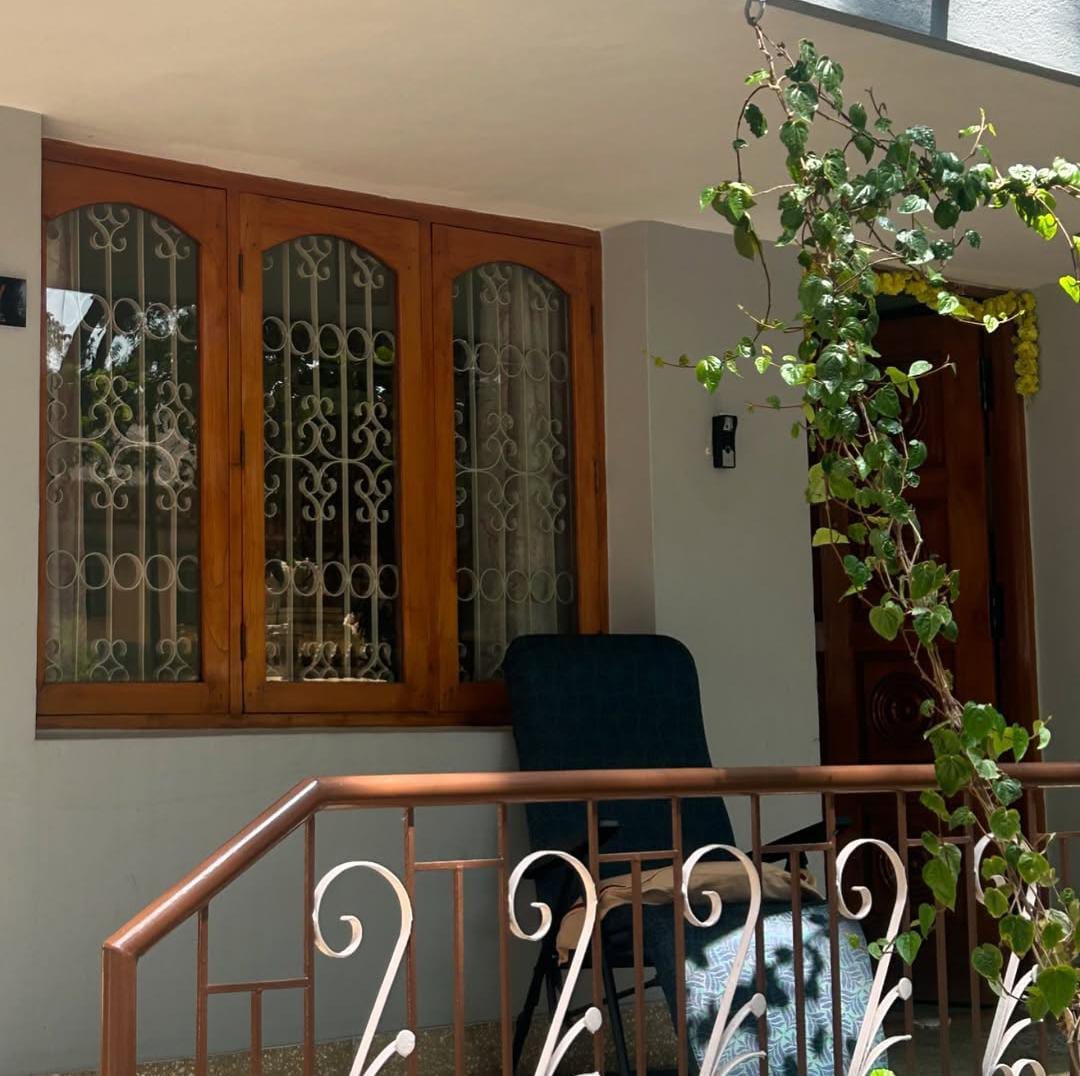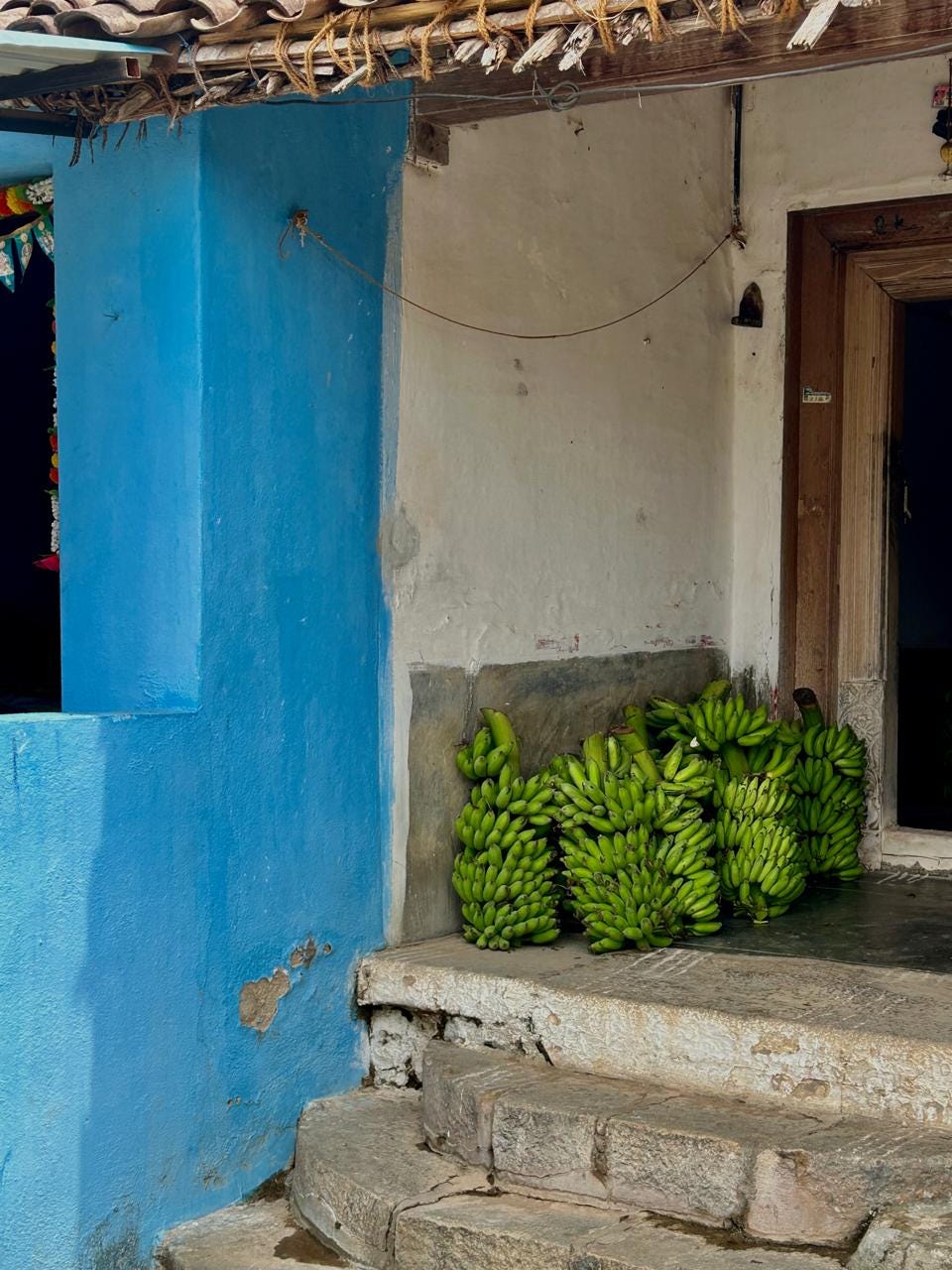The Compound Wall: A Quiet Metaphor for Urban Disconnection
A reflective essay on Boundaries, Belonging and Urban landscapes.
Hello, my dear readers! Today I want to talk to you about something I’ve been noticing for quite some time.
I just returned from my mini trip from Mysore, India. One of my friends Koyal got married and it was my first ever Coorgi wedding! It was a fun get away from the chaos here in Bangalore and this ‘getting away from the chaos’ got me thinking.
The Compound wall as a metaphor
Aristotle said, “Man by nature is a social animal.” But does this statement still hold true in the 21st Century? Maybe the medium has changed! As a city girl, I spent most of my childhood in a space that is fast paced, traffic choked, brightly lit and full of apartment buildings with high fortress like compound walls.
Compound walls.
They’ve always been part of my everyday view. Tall, closed off, built to keep people out. But during my stay in Mysore, I noticed something different. Mysore is filled with long-standing, lived-in homes not officially heritage houses, but full of memory and character. And almost all of them had low compound walls and sit out porches.
See how I call it homes and not houses? Every home had a unique streak of character to it. A sense of heritage and memory. Every home had a unique name, an interesting plant planted or traditional low compound wall design.
Marc Augé, a renowned French anthropologist and ethnologist is his work Non-Places: Introduction to an Anthropology of Supermodernity spoke about this idea of what it means to have spaces without identity, memory, or relationships like airports or highways. I haven’t personally read the book but had come across the concept in conversation with a junior. Increasingly, I think cities are growing their own versions of non-places. Not because they’re transient, but because we’re losing the social threads that once made them feel like home.
And maybe, just maybe, the humble compound wall has something to do with it.
The Architecture of Interaction: What Walls Tell Us About Social Life
From my 21 years of experience of spending at least every other summer break in Mysore and my grandfather’s village near Coorg, the one thing I am certain of is ‘My ability to Romanticize life drastically improves in these spaces.’
This definitely could just be because I step in to a slower landscape from a faster one and the height of the compound wall has nothing to do with it.
Or maybe the low compound wall allows for me to engage with my landscape further and the height seems normal because that is the norm of the landscape. I can confidently say at least 70% of the homes in Mysore and the villages near Coorg have low compound or no compound walls. People are more in tune with their neighbors like family, chat across the wall, pick flowers that would fall across on the other side, exchange food goodie boxes on occasions and what not!
You see when I first very intentionally started reflecting on how I feel in slower landscapes, I always thought the low compounds were weird. It was very different from what I had seen in my city. In fact, the very few low compound walls that existed also were heightened with barbed wires for safety.
I was having this conversation with a friend from college, and he said that Bangalore was just the same about 10 years ago. Low compound walls, open roads, more green cover and less traffic. And then came the apartment spaces that could now house way more families within the same dimensions. Onwards and Upwards. So high that your building provides shade to the trees below instead the other way around! And now even the few independent houses that exist are either building a few more floors to rent out or increase the height of their walls for safety and privacy.
“Safety and Privacy are essential. But at what cost? At the cost of not even knowing the name of the person who lives 2 houses away from you. At the cost of not having anyone to turn to for help in a moment of need. At the cost of turning neighborhoods into silent rows of strangers.
So now what?
I am not saying one should compromise on their safety and privacy. I am not saying only low compound homes are homes and every other apartment is a house with no soul. I am also not saying this is the only form of interaction because now with the advent of social media we may not necessarily be in tune with our neighbors, but we have friends and loved ones across continents! The kind of interaction a compound wall can never offer!
All I am saying is if things are constantly changing then how does one cope with it? How does design cope with it? Do we design flexible compound walls that increase or decrease their height depending on how well we know the person across it? I don’t know! Maybe it’s not about how high we build our walls but about how open we choose to remain behind them? I don’t have the answers. But sometimes walking away with questions helps.
Let me know what you guys think! What your experiences are like! I think this newsletter issue is more about me tango-ing between metaphors and reality and I am happy to hear what you think!





